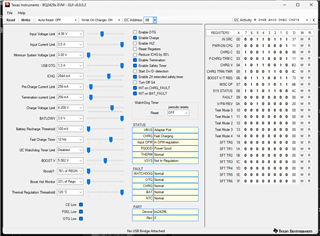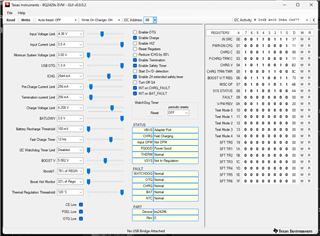Other Parts Discussed in Thread: TUSB320
Tool/software:
Hi,
One of my customers is using this device to charge a single cell Li-ion battery (in combination with TUSB320)
They've programmed the Fast Charge Current limit to a large value (equating to 2.688A) however the batter is only charging to 650mA, do you have any recommendation on resolving this?



